日서 발견된 ‘인어 미라’ 분석해보니…최소 3개 종 합쳐진 생명체
서로 다른 종 3개를 갖다붙혀 새로운 괴생명체를 만든 인간의 상상력과 실행력은 실로 무섭다.
...
https://nownews.seoul.co.kr/news/newsView.php?id=20231025601004
영국 메트로 등 외신의 24일(이하 현지시간) 보도에 따르면, 해당 괴생명체 미라는 1906년 미국 국적의 한 선원이 일본 해역에서 발견한 뒤 미국으로 가져갔고 이후 오하이오주(州)의 클라크카운티역사협회에 기증했다.
미국 노던켄터키대학의 방사선과 전문가인 조셉 크레스 박사는 ‘괴이한 인어’의 정체를 밝히기 위한 연구를 진행했다.
연구진은 해당 미라가 발견된 이후 처음으로 엑스레이 촬영과 CT스캐닝 등을 진행했으며, 그 결과 ‘인어 미라’로 불린 괴생명체는 외형적으로 봤을 때 최소 3개의 다른 종(種)이 섞인 생명체로 보인다는 결론을 내렸다.
이어 “다만 분명한 것은 마치 ‘프랑켄슈타인’처럼 만들어 졌다는 것이다. 향후 연구 목표는 어떤 종의 생명체 DNA가 합쳐진 것인지 알아내는 것”이라고 덧붙였다.
다만 해당 미라를 보관해 온 크라크카운티역사학회의 나탈리 프리츠는 “이 미라는 사기꾼이 대중화시킨 ‘속임수’”라면서 “사기꾼으로 불려온 기업가이자 엔터테이너인 P.T 바텀(1810~1891)도 1865년 당시 자신의 박물관에 비슷한 (가짜) 미라 표본을 전시한 적이 있다”고 주장했다.
인어에 '진심'인 일본
이 때문에 일본에서는 종종 ‘인어 미라’가 발견되기도 하는데, 1800년대 후반에 발견된 뒤 올해 최초로 분석된 한 인어 미라는 실제 생명체가 아닌 종이로 만든 ‘가짜’로 밝혀졌다.
지난 2월 일본 쿠라시키예술과학대 연구진은 17세기 에도시대 것으로 추정되며 오카야마현의 한 사찰에서 보관 중이던 ‘인어 미라’에 대한 분석을 진행했다.
해당 미라의 몸길이는 약 30㎝. 머리에는 이빨, 손에는 손톱도 있고 하체에는 비늘도 관찰돼 오랫동안 ‘인어의 현신’으로 불려왔다.
그러나 분석 결과 몸의 단면을 보면 두개골은 없었고, 대신 천과 종이 등이 채워져 있다는 사실이 확인됐다. 이에 현지 민속학 전문가들은 “과거 조상이 인어를 표현하기 위한 하나의 수단으로 미라를 만든 것으로 보인다”고 밝혔다.
송현서 기자 huimin0217@seoul.co.kr
https://spectrumnews1.com/ky/louisville/news/2023/10/13/merman-at-nku
Mysterious 'merman' receives X-rays and CT scan at NKU to determine origin
HIGHLAND HEIGHTS, Ky. — On Friday, the recipient of an X-ray and CT scan from Northern Kentucky University (NKU) radiology students was a mythical creature from under the sea.
At least, that’s what it was described as being when it was donated to a historical society more than 100 years ago.
This “little mermaid,” however, was not as cute as the one in the classic Disney movie.
The Clark County Historical Society in Springfield, Ohio, is in possession of the creature in question.
“It kind of gives you that question mark look of, ‘What is it? What are you? What was the reason for trying to put something like this together?’” said Joseph Cress, assistant professor for NKU’s radiologic science program.
Natalie Fritz, archivist and outreach director for the Clark County Historical Society, echoed a question people often ask about it.
“Is he a monkey fish? Half monkey, half fish?” she said.
NKU radiology student Haley Griffin was brutally honest.
“It’s kind of ugly. It kind of looks mummified a little bit,” she said. “I just find it really interesting. I mean, I’ve never seen anything like this before. It looks like a mermaid, but is it real or is it not? What aspects to it are there that are real?”
Those questions are why the historical society brought the “merman” to NKU.
“It’ll be nice to have some more answers about what he is,” Fritz said.
Cress said it was something students and faculty were looking forward to.
“We thought it was a really unique opportunity for our students to kind of get hands-on experience taking X-rays and a CT scan of something that they really don’t know anything about. They get a lot of education when it comes to human anatomy, so they can kind of anticipate what’s coming,” he said. “This is something unique that they’re not going to be able to do, probably ever again.”
The little guy was donated to the historical society in 1906, and the staff think he dates back even further to the 1870s.
Sadly, for people who want to believe in real mer-people, the trend of creating these ‘Fiji Mermaids” and selling them as attractions was common at the time.
They were often part of carnivals, museums and traveling side shows in the 19th century. P.T. Barnum even had one in his collection.
“I don’t think it was a thing that existed in nature. I think it was crafted. I know I’m personally more interested in seeing how it was made,” Fritz said. “Is it totally made up? Is it completely paper mache? Is there any actual animal that was a part of it? Or was someone taking a fish and taking a monkey and merging them together?”
The X-rays and scans gave a more clear picture.
“It is Frankensteined and pieced together. So externally it looks like the head and kind of the thorax of a monkey. More toward the feet end is a tail. So you think initially it’s going to be kind of a monkey and a fish put together. After we’ve seen it, it still looks like it’s going to be the head and the thorax of a monkey, but down toward the hands it looks to be more amphibious like. So it could be an alligator, lizard of some sort. We’re not quite sure. And then it is the fish down toward the end,” Cress said. “There was for sure some taxidermy.”
The scans also revealed some metal and cotton.
“They found that it could be possibly wood in there. But then they found there’s actually some kind of bone in the jaw,” Griffin said.
They also confirmed it was indeed male. And while it may not be a true merman, it certainly prepared students for whatever creature comes in next.
“Yeah, I’m up for anything,” Griffin said.
The scans and X-rays will be sent to the Cincinnati Zoo and Newport Aquarium to confirm the animal parts used in the creature’s creation.
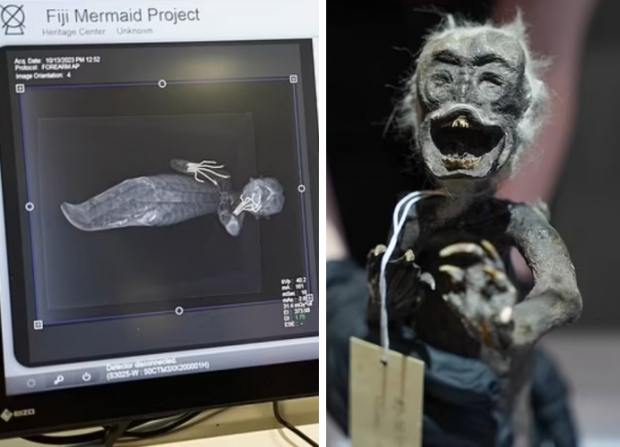

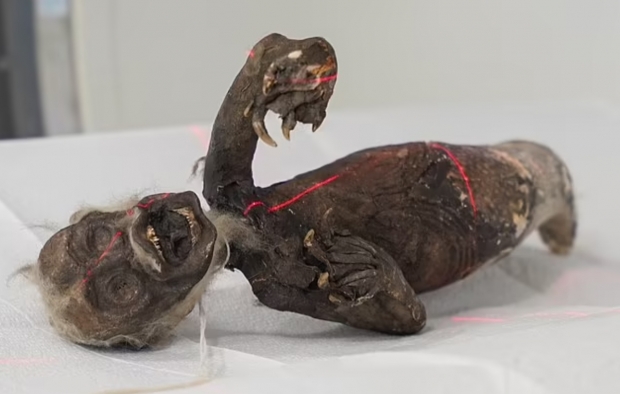

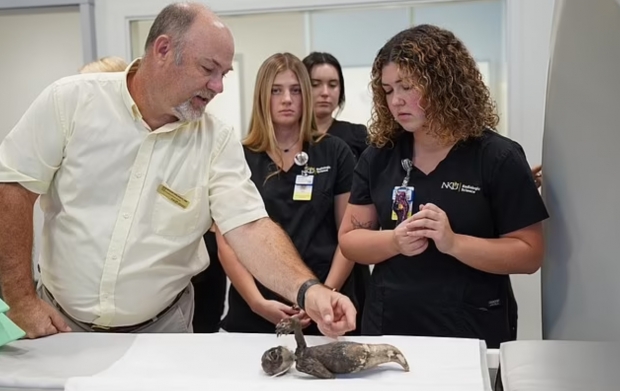
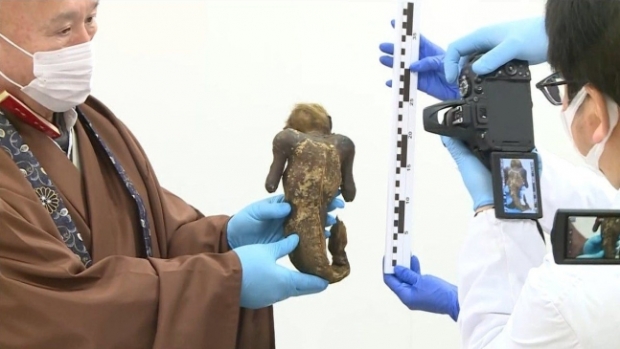
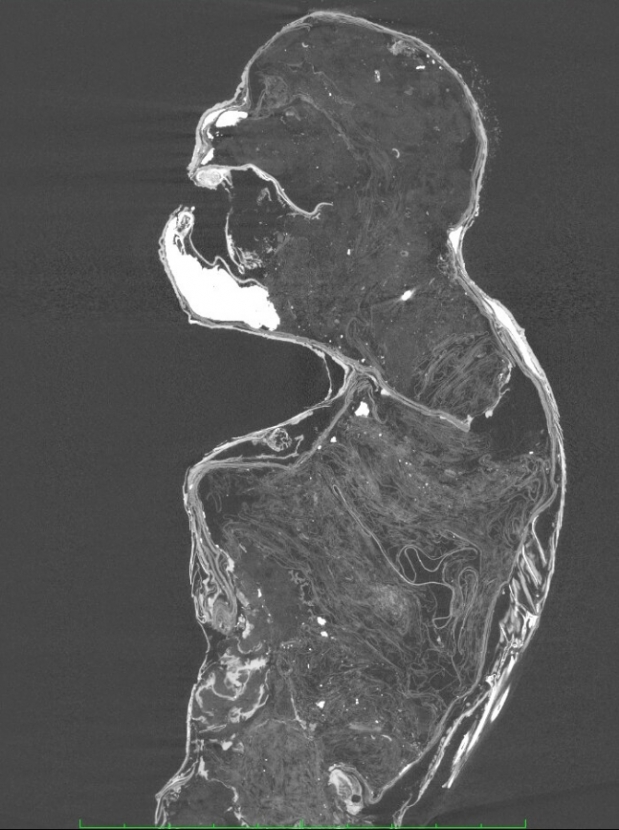
Comments
Post a Comment